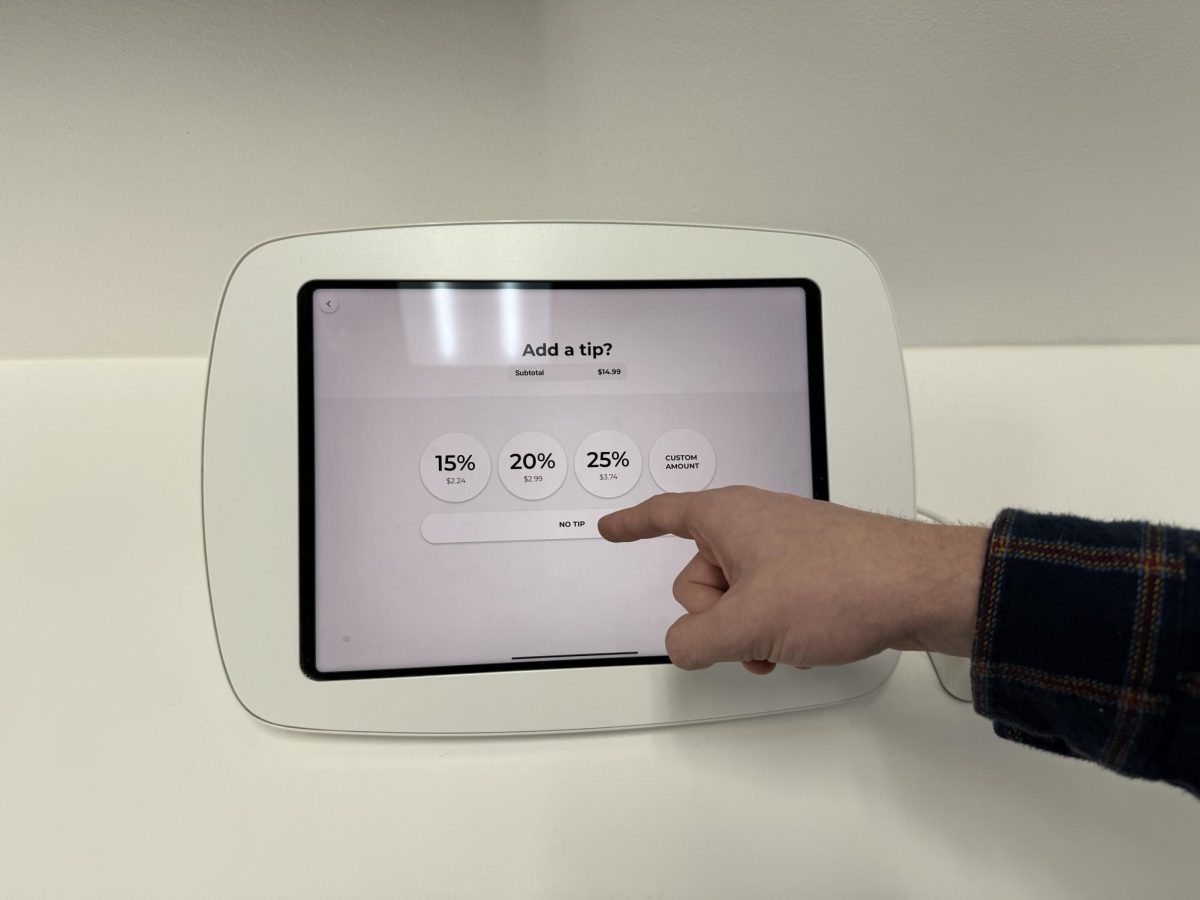The worker flips the tablet around.
10%. 15%. 20%.
This is getting out of hand.
Tipping as a practice was previously reserved for only exceptional service. Over time, it has become customary to always tip workers such as wait staff, barbers and drivers. Now, I may have to manually enter in 0% just to avoid tipping a fast food worker. This practice became common due to financial hardship during COVID-19 and an increase in readily available technology has streamlined the tipping process.
Give me a break.
I shouldn’t be responsible for maintaining the wage of an employee in a mundane environment such as a fast food restaurant. I shouldn’t need to make up for the poor wage that corporations dish out. I shouldn’t be paying employees. Their bosses should.
Large corporations, such as Starbucks, Panera Bread and Crumbl Cookie, especially shouldn’t be coercing me into tipping. They have more than enough resources to properly pay their employees so that no tablets need to be flipped around, expectantly waiting for my extra money.
Tipping in its current form might not even always go entirely to the worker in front of you. In some establishments, tips are split evenly among all workers, defeating the purpose of tipping for exceptional service from a specific worker.
Some tipping screens, however, are presented by smaller businesses. These businesses are, of course, important to support, and I am far more willing to provide gratuity to these businesses.
Most businesses in other countries don’t expect tips and aren’t nearly as generous with tips as Americans. The US has cultivated an out-of-control tipping culture that is ultimately ridiculous and unnecessary.





